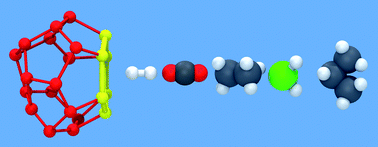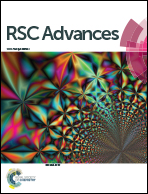Effect of guests on the adsorption interaction between a hydrate cage and guests†
Abstract
The adsorption interaction between a water cage and a guest molecule, shown by the potential of mean force (PMF), is key to understanding hydrate formation mechanisms. In this work, we performed a series of PMF calculations to investigate how the guests affect adsorption interactions. We considered spherical guests for five species of inert gases (He, Ne, Ar, Kr, and Xe), and non-spherical guests for carbon dioxide, hydrogen, hydrogen sulfide, ethane, and propane. The results show that the location of the first well of PMF mainly depends on the guest size (i.e., the kinetic diameter of the guest) rather than the guest structure; and the activation energy (the free energy difference between the first well and the first barrier) mainly depends on the water–guest cross interaction and the size of the adsorption face. An empirical criterion is suggested to distinguish the adsorption face (dring/dguest < 1.72) and cage hole (dring/dguest > 1.72) for a specific guest molecule, where dring is the diameter of the circumcircle of a water ring in a cage and dguest is the kinetic diameter of the guest. Additionally, some interesting phenomena are observed. For example, CO2 has the smallest activation energy and a predominant orientation near the adsorption face. H2S and Kr have almost the same cage–guest adsorption interaction owing to their similar size. C3H8 has the largest distance for the first barrier of PMF so as to require the smallest critical concentration to trigger hydrate nucleation according to the cage adsorption hypothesis. The present observations are very helpful to understand hydrate formation mechanisms.



 Please wait while we load your content...
Please wait while we load your content...